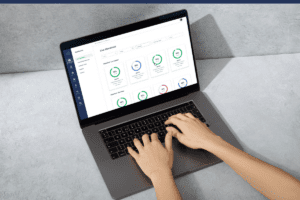Five Signs You Need A New Retention Solution
Retention rates directly impact compliance and your school’s bottom line. Having a strong retention solution in place is critical to the success of your students and your school. If your school is experiencing any of these signs, it’s time for a new solution.
Retention is the livelihood of career education programs. Auditors place a strong emphasis on high retention rates, and student enrollment/retention is directly tied to your school’s revenue. Unfortunately, many career education programs have been basing their retention efforts on piece-meal solutions that fail to address retention needs. Instead, administrators rely on delayed grades and attendance data from instructors and potentially inaccurate student information systems that simply do not empower administrators with the tools they need to succeed.
Here are five signs that it’s time for your school to reevaluate its retention solution.
1. Your Outreach Is Delayed
If you’re waiting for instructors to deliver attendance sheets or enter data from asynchronous activities, your outreach is already behind. On-ground instructors may not deliver attendance sheets until several days after class, making it difficult to discover at-risk students. Similarly, instructors may not enter grades or other activities daily, particularly if they are adjuncts.
A retention solution is only as effective as the data that goes into it. Unfortunately, in the world of proprietary schools where you only have 14 days after LDA to complete Return To Title IV calculations, delayed data is ineffective at best and detrimental to your school at worst.
2. Your Solution Is Reactive
You wouldn’t wait until a fire has already started to purchase a fire extinguisher. So why wait until students are at high risk to begin outreach?
When a student misses at least 10 percent of a class or hits another high-risk milestone, pulling them back on track becomes increasingly difficult. They may have additional makeup hours or missed assignments to complete before they’re able to get back in good standing. For many students, this workload becomes overwhelming. Connecting with a student early when they’re still low-risk gives them a better chance of getting back on track.
But administrator time is often stretched thin. It makes logical sense to prioritize students with the highest risk level; it’s like putting out the largest fire. But while administrators tend to the bigger fires, small fires begin to grow.
Empowering administrators with improved, automated back-office technology frees up hours of time per week previously spent on manual data entry and low-value tasks. With extra hours in the day, administrators can be more proactive with students at mild risk, getting them back on track before they veer too far off course.
3. It’s Unexpected When A Student Drops
Sometimes, students truly do drop without notice due to a life change or other personal issue. But more often than not, there are signs that a student is about to drop, including tardiness, dropping grades, missed classes, or missed asynchronous assignments. Identifying and monitoring these risk factors early on will help administrators intervene with students as much as possible. If a student cannot continue their education after intervention, administrators are already aware of the situation and can reduce delays in Return To Title IV calculations.
4. You Can’t See Why A Student Is At Risk
Maybe you know they aren’t attending class, but are they doing homework or asynchronous assignments? Unfortunately, you can’t tell until an instructor enters asynchronous grades. Maybe their attendance is stellar, but their grades are not. Schools define risk as a combination of attendance, satisfactory academic progress, and other factors. When staff members clearly understand the risk factors impacting each student, they can better customize an intervention plan that meets a student’s needs instead of offering up solutions that may not be relevant to that student.
5. Your Retention Rate Is Decreasing Year Over Year
A continuously decreasing retention rate is the biggest indication that you need a new solution. Decreasing retention rates could indicate a larger problem at your school, like an instructor or program issue. Unfortunately, if your data is decentralized between an LMS, SIS, and other systems, it can be difficult, if not impossible, to proactively spot these trends and take action.
When choosing a new retention solution, find one that integrates with your LMS, SIS, and other systems to combine your data into one clear dashboard view, like CourseKey. For example, CourseKey’s upcoming Retention Dashboard pulls your LMS and SIS data and aggregates it into a customizable dashboard. Administrators can use the data to determine if a decreasing retention rate is driven by a particular course, program, or campus.
Improving Retention Rates and Protecting Your Bottom Line
When students drop out, they’re left with debt and no certificate. It’s a lose-lose situation for everyone involved. Implementing a new retention solution will help your students and administrators, while boosting your bottom line.
Request a demo if you’d like to learn more about how CourseKey’s customizable Retention Dashboard can help your school meet retention goals.
Recent Articles

















